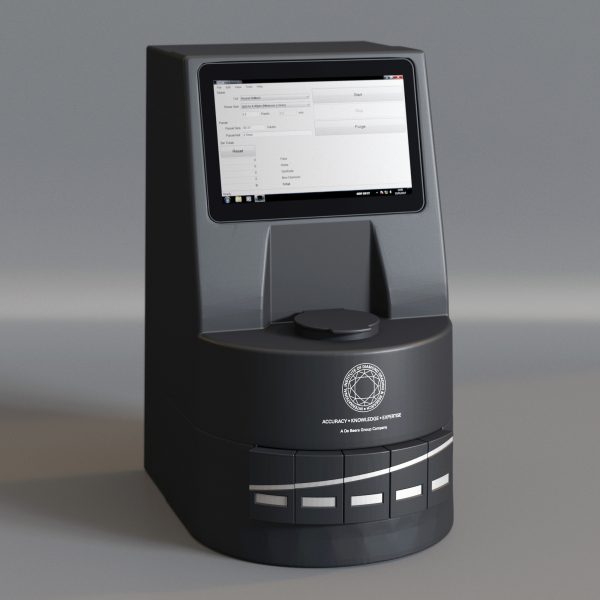
Most of the devices that screen out lab-grown diamonds work on the same principle: They identify tell-tale characteristics of man-made stones—in particular whether the diamonds in question are Type IIs. This typically produces a lot of false positives and referrals for further testing, since not every Type II diamond is lab-grown.
But De Beers’ two new synthetic-spotting devices—its recently-introduced SYNTHdetect, which screens diamonds set in jewelry, and its Automated Melee Screener 2 (pictured)—don’t even consider the diamond’s type. Instead, they use a different (and proprietary) method: They detect if the diamonds are natural. That reduces the referral rate, says Jonathan Kendall, president of De Beers’ International Institute for Diamond Grading & Research (IIDGR), which also runs the company’s grading lab.
“It’s quite a big shift, a new approach for measuring for synthetics,” says Kendall. “With all the concern, there was a need for equipment that is faster. What we are doing is using microsecond synchronization of light. It allows us to excite the luminescence in natural diamonds, which is different from anything in synthetics.”
He says the new devices have a 0.33 percent referral rate. Other machines, he adds, refer as much as 9 percent of stones for further testing.
That said, the new machines are still a bit pricey: SYNTHdetect costs $16,250, while the second melee screener costs $45,000 (down from the $55,000 price tag from the first version).
Kendall says that is about as low as De Beers can go.
“We are not making money on this equipment,” he says. “We are doing this to support the industry. We have pulled costs down as much as possible.”
Meanwhile, IIDGR—which may change its name now that De Beers has bought its brand back from LVMH—is also going in yet another new direction: It is now offering education courses for the industry.
In April, it launched a synthetic detection course, which will be run with the American Gem Society in the United States. It will also debut an introductory “Diamond Foundations” course in August, as well as a diamond grading course down the line.
This doesn’t mean that the IIDGR plans to become another educational institution like GIA, Kendall says.
“We are more commercial,” he says. “Our courses are more about supporting people in a business sense. GIA runs broader sorts of courses. We are only focused on diamonds and in particular natural diamonds.”
(Image courtesy of IIDGR)
Follow JCK on Instagram: @jckmagazineFollow JCK on Twitter: @jckmagazine
Follow JCK on Facebook: @jckmagazine